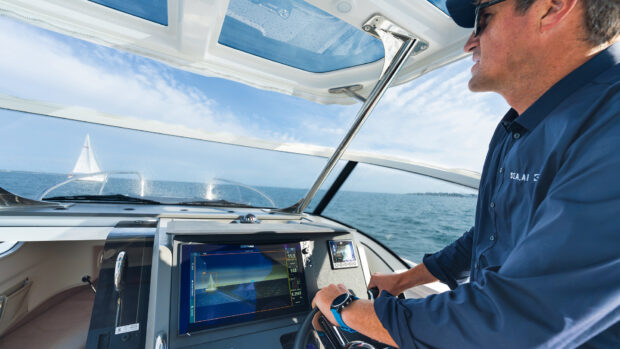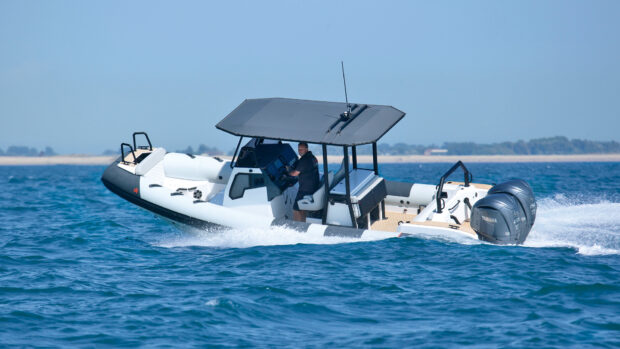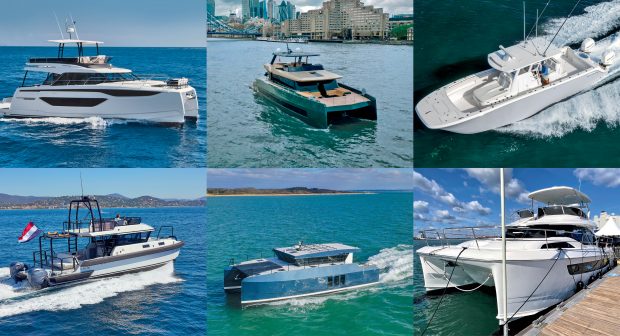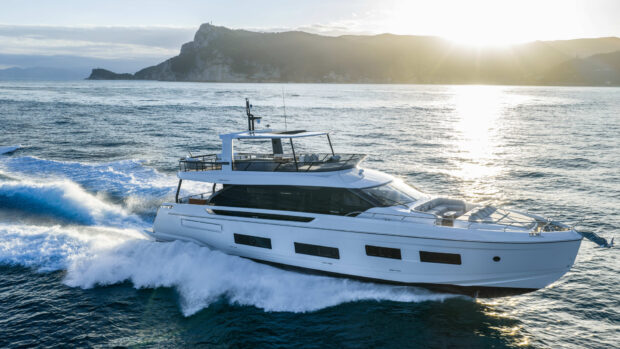The new Integrel is an automatic electrical power system that generates, stores, converts and distributes electrical power on board and could replace petrol and diesel generators
The days of a noisy, smelly diesel generator disturbing the peace of a tranquil anchorage may soon be numbered.
British company Triskel Marine has come up with a cleaner, quieter alternative that it claims will make conventional gensets redundant. The judges at the recent DAME Awards seem to agree, awarding the new Integrel system both a category win and the Overall Winner’s title.
What is Integrel?
Essentially, it’s a completely automatic electrical power system that generates, stores, converts and distributes electrical power on board wherever and whenever it’s needed. The system is designed to be a direct replacement for a 10kVA generator with sufficient capacity to supply all the electric demands of 40-50ft motor boat for at least 12 hours. Bigger versions will follow later.
It works on much the same principle as a conventional alternator, in that it uses the boat’s main engine(s) to generate electricity, but every part of it is massively faster and smarter. The really clever bit is that it takes advantage of the propeller’s inability to put enough load on the engine to keep it burning fuel as efficiently as possible throughout its rev range.
This wasted potential exists because the optimum power curve of a diesel engine is a different shape to the absorption curve of a propeller. The only point at which the two meet is at wide open throttle. At any other RPM the engine is making more power than the propeller can absorb. The Integrel system takes advantage of this by increasing the loading to the engine’s optimum and using that excess to generate electricity. This is stored in a separate 48V battery bank and either converted directly into 240V AC power or fed back into the 12V domestic batteries in much the same way that a reserve diesel tank feeds into a day tank.
How does it work?
The starting point is a powerful belt-driven generator that links to the main engine’s power take off. Described as an ‘alternator on steroids’ it uses permanent magnet technology to generate up to 9kW from any engine of 75hp or more – a standard alternator musters 1-2kW and then only at certain speeds. The beauty of the Integrel generator is that it can harness much of that power from speeds as low as 800rpm, progressively increasing the loading as revs rise by adjusting the magnetic field in the rotor to scavenge the wasted energy.
In order to minimise charge times and cable thickness a rectifier raises the voltage to 48V before feeding it into the reserve battery bank. This consists of four high capacity 12V lead acid or lithium ion batteries linked in series to create a single 10kWh 48V pack. Extra 10kWh banks can be added to increase the total storage capacity. Power is then fed from here to a 3kW 48V inverter and on to the boat’s 240V AC sockets or via a 48V to 12V battery-to-battery charger to the standard 12V domestic batteries.
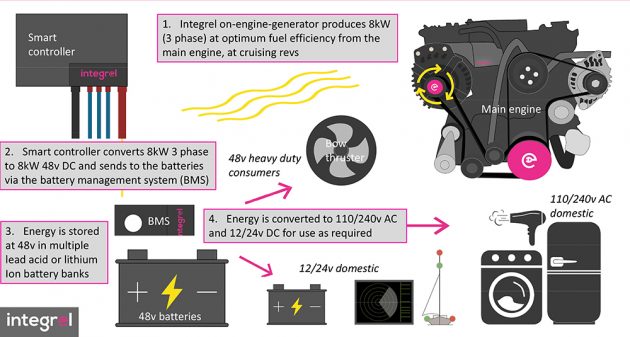
The key to the set-up is a sophisticated controller and battery management system that monitors the batteries’ condition, temperature and state of charge 100 times a second and adjusts the generator, rectifier and charger accordingly. This not only minimises charging times and maximises efficiency but also increases the longevity of the battery bank – Triskel expects to get at least seven years from a lead acid bank and longer from a lithium-ion one. Such is the efficiency of this set-up that it can recharge a 10kWh battery bank from 30 per cent to 80 per cent in just one hour, reaching 100 per cent two hours later.
The whole system is completely automated and idiot-proofed to avoid any chance of overloading or damaging the batteries or components. A straightforward 5in touchscreen displays all the relevant information such as state of charge and time remaining, only prompting the user to fire up the engines when battery levels drop too low. This can be done at anchor in standalone generation mode, although this should rarely be necessary in normal cruising use.
What are the benefits?
With sufficient battery capacity it should deliver enough silent, emissions-free power to run all the boat’s electrical needs, including the air-conditioning, overnight. Most of the time this will be generated during normal cruising using minimal extra fuel, with no effect on boat speed and no increase in running hours.
With no need for a separate generator there are no additional servicing costs to worry about either and no need for any through-hull skin fittings. And depending on the number and type of battery banks, it need not take up any more space or weight. The standard lead acid 10kWh bank weighs 260kg, a Li-ion one less than half that (roughly the same as a generator).
What about downsides?
At the moment the Integrel system is limited by the generator’s 9kW maximum output. Triskel is working on an uprated 15kW model for larger boats with more powerful engines but it’s likely to be at least a year until it’s ready. This is the practical limit before either the cables get too big or the voltage becomes too high to be classed as a low voltage system.
As with any battery based system there is a limit to how long you can continuously draw power before needing to recharge the system, while adding extra battery banks will add significant extra weight. Lead acid batteries can only discharge to around 30% without risking damage and however well the system looks after them at some point they will need replacing. For both these reasons Triskel recommends using Li-ion batteries on a planing motor boat, giving increased capacity and longevity for significantly less weight. The only downside is the extra cost.
How does it stack up?
The indicative price for an Integrel system built around a single 10kWh lithium ion battery bank is £18,000. This is sufficient to give around eight hours of silent running with a continuous load of 1kW. Higher loads can be taken with more batteries and a bigger inverter, with each additional 10kWh of Li-ion batteries adding an extra £8,000. This drops to £2,000 for advanced lead acid if you can live with the extra size and weight.
Almost $10m of research and years of testing both in the laboratory and on board boats have given Triskel the confidence to bring Integrel to the market. Now it’s down to owners and manufacturers to decide if they are ready to
go generator free.
Contact: Integrel Marine

Cox Powertrain CXO 300hp: the world’s first 300hp diesel outboard engine has landed
Cox Powertrain CXO 300hp, the world’s first 300hp production diesel outboard is here at last, thanks to the engineering expertise

Video: Volvo, the boat that parks itself
Volvo bought an Azimut 68S to test and demonstrate its new self-docking system. Jon Mendez tests the new technology at

Cox CXO 300hp diesel outboard production plans and release date revealed
Berthon Power have announced they are the official UK and Ireland distributor for Cox Powertrain. The 300hp diesel outboard engine





